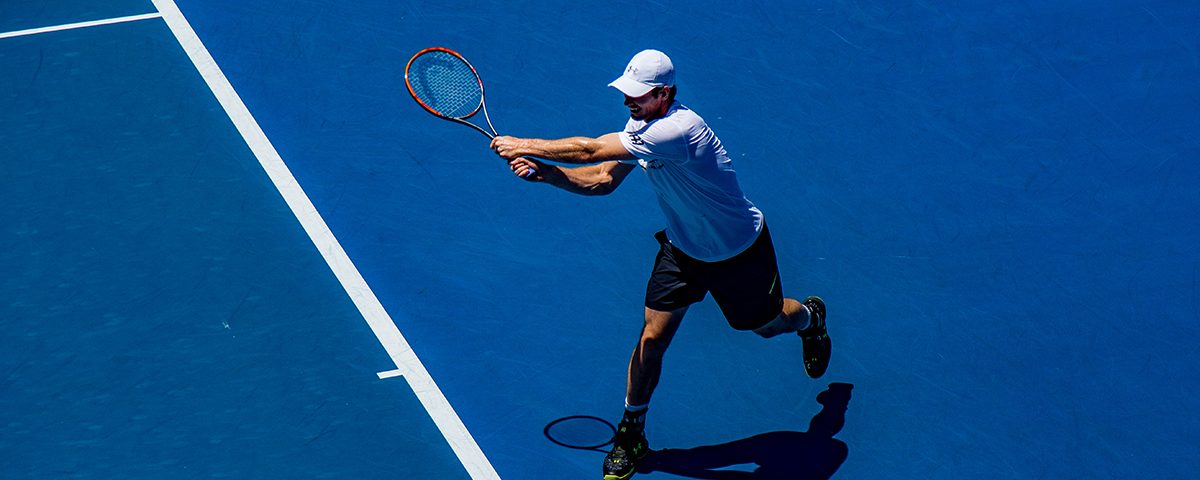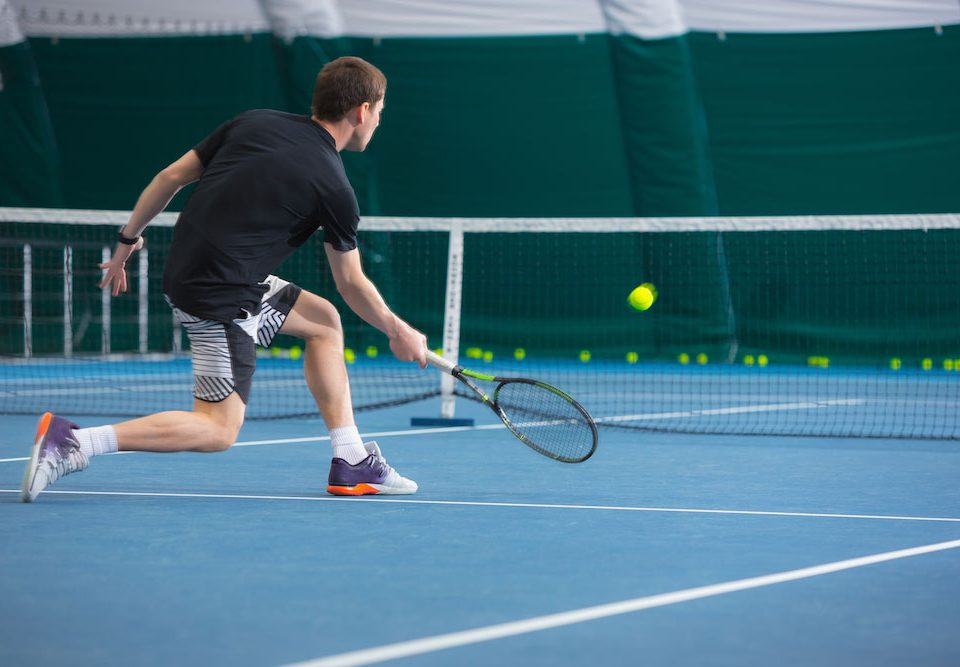
Time to Play Ball: Preventing Little League Injuries
March 1, 2017
Musculoskeletal Ultrasound: Working for You
May 8, 2017Tennis Elbow: 5 Things You Should Know

Maybe you’ve felt it before…an uncomfortable twinge that comes along with a backstroke while out on the court. Suddenly your outer elbow doesn’t feel great, but you play through the pain. Later that night you go to pick up a glass and ouch – your forearm and elbow hurt! It’s likely that you’ve developed one of the most common orthopedic injuries out there: Tennis Elbow.
Lateral epicondylitis, or as most of us know it, Tennis Elbow, is a common injury to the tendons attaching the forearm muscles to the outer elbow. Due to repetitive use, these tendons can become inflamed due to small tears, leaving the patient with a very uncomfortable feeling when using the affected arm. Most patients report pain on the outer elbow, along with difficulty holding objects, which can make it hard to complete everyday tasks.
The good news is this condition is easily treatable in most cases. Read on to learn more about this joint injury.
Tennis Elbow is Rarely Caused by Tennis
Despite the name, tennis is rarely the cause of tennis elbow. Any repetitive activity involving the use of your first two index fingers and thumb can put you at risk, especially if the action involves rotation of the forearm. Many people who end up with this condition are carpenters, plumbers, kitchen staff, and even knitters. It doesn’t necessarily take a large amount of force to cause the injury – repetition of the twisting motion can cause tennis elbow over time, especially if patients ignore early warning signs.
Tennis Elbow and Golfer’s Elbow Are Two Different Things
Sometimes patients conflate tennis elbow and golfer’s elbow into a single injury. While similar in symptoms and causes, they affect different areas of the elbow.
Tennis elbow affects the tendons attaching the forearm to the outer elbow, while golfer’s elbow (also known as pitcher’s elbow) has an impact on the tendons connecting the forearm to the inner elbow. Much like tennis elbow, additional activities cause golfer’s elbow, including baseball, bowling, gardening and other repetitive motion activities.
Warming Up and Paying Attention Can Help Prevent Tennis Elbow
Like many sports-related injuries, tennis elbow can sometimes be related to improper form, faulty equipment, and lack of preparation. It’s easy to become caught up in an activity and ignore some essential first steps that help to prevent potentially long-lasting injuries.
Remember to warm up your arm muscles whether you are playing tennis or getting ready to work on a construction project. Stretching can help to loosen up and prep your body for activity. Whenever you are participating in activities that involve the same movements over and over again, taking a break every once in a while can help to relieve stress in the injury prone area.
If you are a tennis player, balenced equipment is essential to injury prevention. A racquet that is too heavy, a grip that is too large, and strings that are too tight can all lead to tennis elbow injuries. If tennis elbow is something you struggle with, you may want to consider lessons from a professional, as sometimes injuries can be caused by bad form.
If You Don’t Ignore It, Tennis Elbow Is Rarely Serious
If you notice that you have the symptoms of tennis elbow – a sore outer elbow and difficulty gripping objects – the best thing to do is to rest the affected arm. Don’t play through pain – tennis elbow can become a chronic issue if ignored, which means more invasive treatments to get rid of the problem.
In most cases, this injury can be cleared up with rest, ice, and over-the-counter pain medicine. The key is to avoid playing through pain and allow the tendons in the area to heal completely – for those who must continue working or playing, a brace or elbow strap can help to provide extra support in the area. If ignored, tennis elbow can become more problematic and in some cases, can develop into a chronic condition. If this happens, treatment options become more invasive and can include anything from physical therapy to steroid injections, to surgery, depending on the severity of the injury.
Severe Tennis Elbow May Be Helped by PRP Therapy
Here at Charlottesville Orthopaedic Center, we are proponents new, promising treatments, including Platelet Rich Plasma Therapy. This therapy uses the power of your platelets to help the healing process and is reserved for patients suffering from chronic tennis elbow that is not responding well to traditional treatment options. In a 45-minute, minimally invasive session, platelets are taken from your blood, concentrated, and injected into the injury site. Within only a few weeks many patients begin to see signs of improvement.



